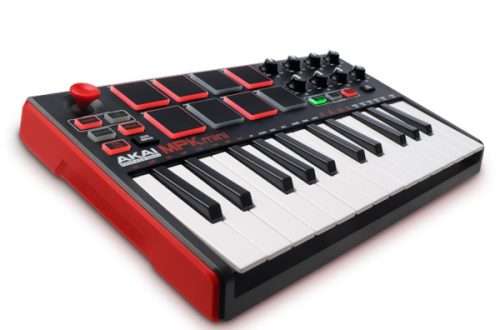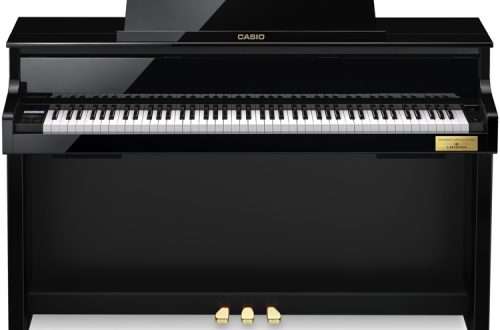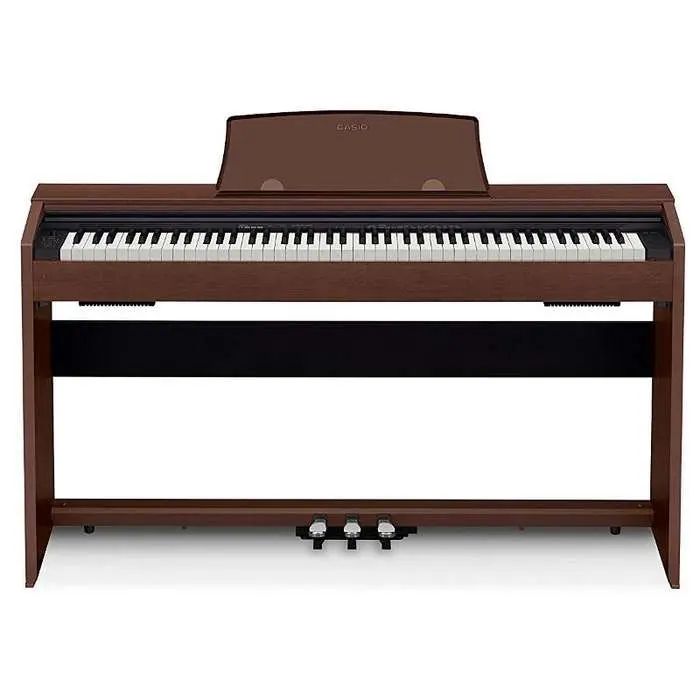
How to choose a trumpet
Contents
The trumpet is a brass musical instrument of the alto-soprano register a, the highest in sound among brass wind instruments.
The natural trumpet has been used as a signaling instrument since ancient times, and from about the 17th century it became part of the orchestra. With the invention of the valve mechanism, the trumpet received a full chromatic scale and from the middle of the 19th century became a full-fledged instrument of classical music . The instrument has a bright, brilliant timbre and is used as a solo instrument, in symphony and brass bands, as well as in jazz and other genres.
The trumpet is one of the oldest musical instruments. Mentions of the oldest instruments of this type date back to about 3600 BC. e. Pipes existed in many civilizations – in Ancient Egypt, Ancient Greece, Ancient China, etc., and were used as signal instruments. The trumpet played this role for many centuries, until the 17th century.
In the Middle Ages, trumpeters were obligatory members of the army, only they could quickly convey the order of the commander to other parts of the army that were at a distance with the help of a signal. The art of playing the trumpet was considered “elite” , it was taught only to specially selected people. In peacetime, trumpets sounded at festive processions, knightly tournaments, in large cities there was a position of “tower” trumpeters who announced the arrival of a high-ranking person, a change in the time of day (thus acting as a kind of clock), the approach of enemy troops to the city and other events .
The valve mechanism, invented in the 1830s and giving the trumpet a chromatic scale, was not widely used at first, since not all chromatic sounds were pure intonation and equal in timbre . Since that time, the top voice in the brass group has increasingly been entrusted to the cornet, an instrument related to the trumpet with a softer timbre and more advanced technical capabilities. The cornets (along with the trumpets) were the regular instruments of the orchestra until the beginning of the 20th century, when improvements in the design of instruments and the improvement of the skill of trumpeters practically eliminated the problem of fluency and timbre .a, and the cornets disappeared from the orchestra. In our time, the orchestral parts of the cornets are usually performed on the pipes, although the original instrument is sometimes used.
Nowadays, the trumpet is widely used as a solo instrument, in symphony and brass bands, as well as in jazz , funk, ska and other genres.
In this article, the experts of the store “Student” will tell you how to choose the pipe that you need, and not overpay at the same time.
Trumpet device
Before buying, we recommend that you study the constituent elements of the pipe , to which it owes its unique sound: pipe, mouthpiece , valves, bell . The coating material of the instrument also matters.

Tube – a section of the pipe from the mouthpiece a to the crown of the general system. Made from regular (yellow) brass, red brass or 925 sterling silver. Red brass or tompack (a type of brass) is the material of choice for training pipes, as it is less susceptible to corrosion. Yellow brass tools require more frequent cleaning. There are models with a reverse tube. The air inside the tool with such a tube encounters less resistance due to fewer butt joints. This improvement makes the game much easier.
valves(more precisely, pistons) are made of various metals. Nickel-plated pistons are often found in training pipes, as they are strong, durable and less sensitive to occasional cleaning. Another common material is monel (an alloy of nickel and copper). Monel is softer than nickel, monel pistons require regular cleaning and lubrication. Monel has corrosion resistance, plasticity, high tensile strength. Monel caps are used on both professional and training pipes. Stainless steel caps are considered to be quite good, they are found in tools of the average and professional level. A good valve responds quickly and smoothly to pressure. This is the result of proper lapping of the piston – the final operation of installing the piston into the glass.
The bell of both educational and professional instruments is most often made of yellow brass. Also common are pink brass bells with a darker, warmer tone. Silver bells are placed exclusively on premium pipes. In the past, nickel was used as a bell material , but now it is almost never found.
A more important factor is the design of the bell . The best bells are made according to a template from a single sheet of metal. The master manually shapes it with a rubber mallet. It is believed that the bellHandmade s vibrate more evenly. Teaching tubes and mid-level instruments usually have welded sockets . In recent years, plasma welding technology has made it possible to bring welded sockets closer in characteristics to solid ones. Bells also vary in size and taper, both of which indirectly affect the sound.
Mensura is the ratio of the widest and narrowest part of the pipe. The inner diameter of the tube of the second crown is averaged. Most often there are tools with a scale of 0.458-0.460 inches (11.63 – 11.68 mm). Instruments with a larger scale sound louder, but require more effort from the performer; these pipes are played mainly by professional musicians. For beginners (especially children), it is better to purchase a pipe with a smaller scale, because. in this case, it is easier to achieve a clear sound.
Trumpet types
Let’s get acquainted with the different types of trumpet, their features and the genres of music in which they are predominantly used.
Bb pipes
The most common type is the B-flat trumpet. With a warm, spacious sound, it fits well with any ensemble and is therefore used in all musical genres from classical to modern jazz and pop music. The Bb trumpet is also the most common teaching instrument , as many pieces of music and instructional material have been written for it. To make things easier and choose a pipe according to your level and finances, refer to the range of training, intermediate (semi-professional) and professional models.
Student Trumpets Bb
Many companies produce a series of models specifically for beginner musicians. Entry-level pipes are usually inexpensive, yet durable and have features that make it easy for beginners to play. For example, a smaller scale in a student’s trumpet allows you to extract a clear and full sound with less effort.
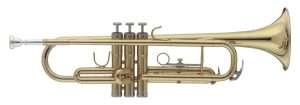
Pipe STAGG WS-TR215S
Semi-professional Bb pipes
As players become more proficient in playing, musicians may find that the capabilities of the training tube are not enough. In this case, it is recommended to switch to mid-level tools. Semi-professional pipes combine a wider range of sound production, but at the same time they are cheaper than professional ones. Musician’s Friend has a large selection of semi-professional trumpets in B-flat tuning.
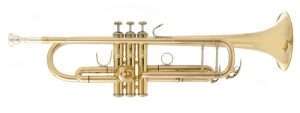
Trumpet John Packer JP251SW
Professional Bb Pipes
Professional-level pipes are made by highly qualified craftsmen from the best materials, taking into account all the requirements that an experienced performer imposes on an instrument. Professionals who need an instrument with an impeccable sound and high sensitivity of the mechanism can choose a professional-level trumpet in the online store “Student”.
Bass Trumpets
Although the bass trumpet is played primarily by trombonists, some famous trumpeters also perform with this instrument. British Philip Jones and Dave Matthews Band member Rashawn Ross are examples.
The bass trumpet has the same tuning as the trombone, most often in C (C) or B flat (Bb). Notes for it are written in the treble clef, but are performed lower by an octave (bass trumpet C) or a large non (bass trumpet Bb).
A bass trumpet with a drawstring is unlikely to be suitable for beginner trumpeters, but it is a good choice for trombonists who want to improve their valve playing skills, as well as for trumpeters who want to expand their playing possibilities and master an instrument with a lower register .
Trumpets in C line
Although the C trumpet is less common than the Bb trumpet, this variety is quite common and has even gained popularity in recent years.
C trumpets are increasingly found in orchestras alongside Bb trumpets. The C trumpet is tuned a tone higher than the B flat trumpet, and the slightly smaller body makes it sound brighter. Its pure, juicy timbre is successfully used in orchestral works. The C trumpet is equally well suited for professional players and advanced students, allowing you to improve the level of performing technique.

Trumpet C John Packer P152
Trumpets in Mi tuning
Along with the most common types of trumpet in B-flat and C, there are models designed for playing in a higher register e. As a rule, they are used in those orchestral works where a higher register contributes to greater accuracy of sound production and ease of fingering. Trumpet E is an example of just such an instrument. Despite its low frequency of use compared to Bb, C, and even Eb trumpets, the in-tuning trumpet is a valuable item in a professional orchestra player’s collection. Often, the E tuning is just one of the possible tunings of an instrument with interchangeable bells that can be tuned to higher keys.
Piccolo trumpets
For trumpeters, who often play parts in the high register e (characteristic, for example, of Bach or baroque music), the piccolo trumpet is the main instrument. Used in B-flat tuning, an octave higher than a regular Bb trumpet, almost always has an additional krone and the possibility of tuning to A (A) tuning. In addition, the piccolo trumpet is equipped with a fourth valve (quart valve), which lowers the system by a perfect fourth. The combination of these features expands the possibilities of the instrument, making the piccolo trumpet a worthwhile investment for advanced and professional players.

piccolo trumpet
Pocket Trumpets
Trumpeters, who are often on the road, will be pleased to know that there is an instrument even more compact than a regular trumpet. The compact design is achieved by particularly tight bending of the tubes, while the pocket trumpet allows the full range of the Bb trumpet to be extracted and is indispensable for street music playing, travel activities, etc.
For all its convenience, this type of trumpet is not well suited for live performances, although some jazz players occasionally use it in their sessions.
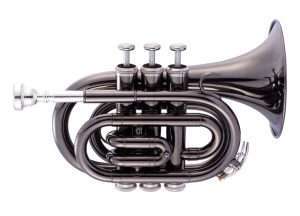
Bb pipe compact John Packer JP159B
Rocker Trumpets
Beginning musicians are unlikely to choose a trumpet with a slide as their first instrument, but for trombonists who want to practice their skills on a mouthpiece instrument, or trumpeters who want to expand their professional range , this is a reasonable solution. As a result of such “experiments”, some performers generally abandon the traditional trumpet in favor of a rocker instrument. For experienced jazz trumpeters, the scotch trumpet is a great second instrument with which to experiment with sound. The slide trumpet (or slide trumpet) is sometimes used in orchestral music of the Baroque and Renaissance eras.
Trumpet examples
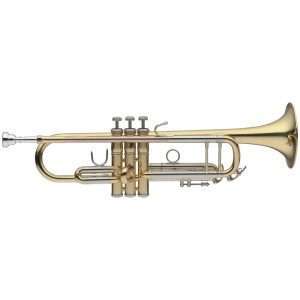 LEVANTE LV-TR5205 | 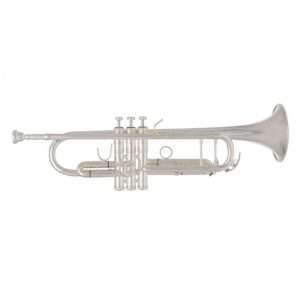 John Packer JP051S |
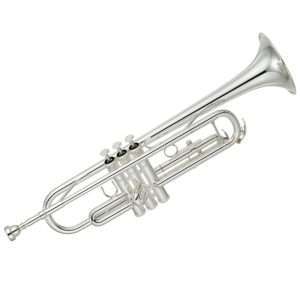 Yamaha YTR-3335S | 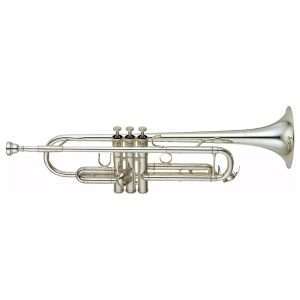 Yamaha YTR-6335S |




